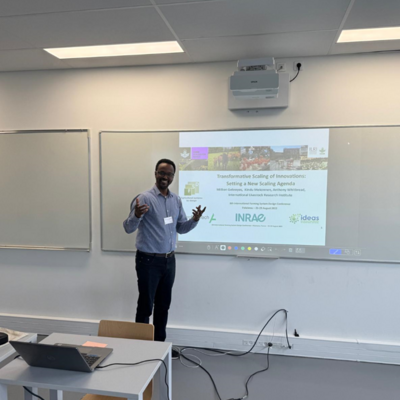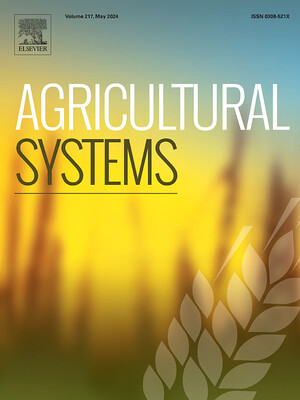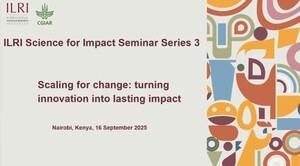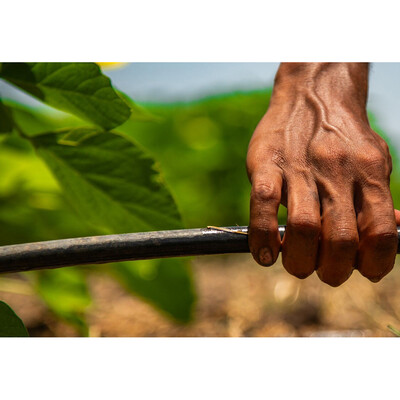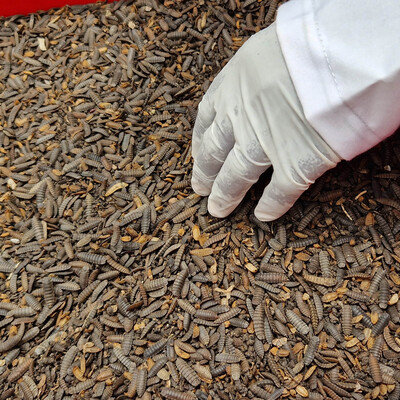
An innovation platform writeshop: Capturing and scaling out learning
In May 2013, the International Livestock Research Institute (ILRI) convened a ‘writeshop’ on innovation platforms in Nairobi. Twenty individuals worked together, with expert facilitation and artistic support to produce 12 ‘practice briefs‘. A contribution to the CGIAR Humidtropics research program, the briefs draw on experiences of the CGIAR Challenge Program on Water and Food, several CGIAR centers and partner organizations.
The basic idea was to bring together and synthesize key learning and messages from (mainly) CGIAR experiences with innovation platforms (IPs) in Africa. We wanted to generate focused products to help inform future CGIAR and related ‘research for development’ (R4D) investments in innovation platforms.
Innovation platforms have been used by the private sector to gather information and improve networking among key stakeholders in a particular economic sector. They caught the attention of development agencies at the end of the 1980s and they are are now increasingly common in research and development initiatives.
The group’s working definition of an innovation platform is:
An innovation platform is a space for learning and change. It is a group of individuals (who often represent organizations) with different backgrounds and interests: farmers, traders, food processors, researchers, government officials etc. The members come together to diagnose problems, identify opportunities and find ways to achieve their goals. They may design and implement activities as a platform, or coordinate activities by individual members.
The writeshop originated in several related strands. First, several participants had worked on innovation platforms as part of the Nile BDC program in Ethiopia and wanted a vehicle to help synthesize some key messages, with the help of expert partners. We wanted this learning to travel and be taken up by new programs.
Second, the new ‘Humidtropics’ program was getting started with its own ‘R4D platforms’ and was looking for good practices to build on. Third, while such platforms are widely used in different ways across CGIAR programs, there was little practical synthesized guidance that could be built upon. Fourth,it was felt that a synthesis of lessons across different situations would help build the evidence base for better-informed opinions on the merits of innovation platforms.
Finally, a large-scale workshop on agricultural innovation systems in Africa provided a useful opportunity to bring people together.
From the outset, we looked for two types of participants:
- R4D IP ‘practitioners’ and enablers with strong messages to be documented
- IP and related specialists who can help refine and critique the products
We also sought an expert writeshop facilitator and were able to obtain the services of Paul Mundy – who has long been associated with the writeshop process and had shared some insights at a November 2012 workshop in Addis Ababa. He recommended two local artists to work with the artists on illustrations for the briefs (see some examples).
For three days, the group of experts, facilitator and artists locked themselves in an ILRI meeting room. After prioritizing topics, champions of each topic produced a simple flipchart poster explaining the basic messages of a brief. These were critiqued and were the basis for small writing teams to form. From then on it was intense writing, critiquing, revising, engaging with artists, sharing emerging ideas, and going back to the beginning. We recognized that some important issues (such as gender and IPs) were not covered in the first series but could perhaps be covered in a second batch,
By the end of the three days we had 12 draft briefs.The basic ideas were ready to be shared and critiqued (again) with a group of participants at the international workshop meeting that same week. Finally, the drafts could be refined and polished and published later in the year.
What did we learn from the process?
- Writeshops do work. In just under 3 days, we produced substantive drafts of 12 briefs (we deliberately focused on short synthetic pieces. Other writeshops can last several weeks and produce whole books or journal articles).
- People make the difference. We were blessed that the participants all seemed to be at a similar stage of enthusiasm to get their work synthesized and out in a novel format. Energy and enthusiasm levels were high throughout the 3 days.
- Preparation and facilitation is critical. We got ourselves an expert in writeshops, moreover someone who knew research and innovation. The process was intense and facilitator and participants seriously engaged with and helped writers. We also prepared among the invitees, brainstorming and validating topics to cover.
- Illustrations help. Two artists in the room helped people translate ideas into visuals to accompany the text. Some images work better than others (as is to be expected). The artists worked from ‘concepts’ prepared by authors and this process itself seemed to be helpful in crystallizing ideas.
- Finishing takes time. The drafts went to the facilitator for completion. Drafts were taken to a FARA meeting where they went like ‘hot cakes.’ These were further worked on to ensure consistency of presentation and to fit our short formats.
- Like an innovation platform. In many ways, the process was a microcosm of an (extremely short-term) innovation platform process – shared interests, agreed products, expert facilitation, good documentation, much enthusiasm and energy!
Related ILRI materials on innovation systems
- What are innovation platforms?
- Innovation platforms to shape national policy
- Research and innovation platforms
- Power dynamics and representation in innovation platforms
- Monitoring innovation platforms
- Innovation platforms for agricultural value chain development
- Communication in innovation platforms
- Developing innovation capacity through innovation platforms
- Linking action at different levels through innovation platforms
- Facilitating innovation platforms
- Innovation platforms to support natural resource management
- Impact of innovation platform






